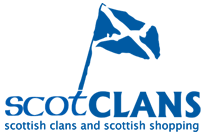National styles
It is often possible to work out the country of origin of a coat of arms from its overall style, of which there are considered to be four traditions: German, Gallo-British, Mediterranean and Eastern (though South Africa and Canada could be said to have their own national flavours).
- A plain field with a charged chief is very typically Scottish.
- Saltires are most popular in Scotland, Spain and Russia, reflecting the position of St Andrew in these countries.
- British and French arms often have chevrons and mullets, rare elsewhere.
- Charges in bordures and in orles are popular in Spanish and Portuguese arms (but also in Scotland). – A shield of two different coats divided fess-wise is probably Italian.
- There are often trees in Mediterranean arms, and they are hardly ever geometric.
- Crests are often not seen in French and Mediterranean arms.
- German arms may have three or more crested helmets, and a pair of horns is also typical.
- German and Austro-Hungarian arms, especially of the nobility, are often immensely complex, with a checkerboard of as many as 128 small coats plus a single coat as an inescutcheon.
- Animals standing on a hillVert against an Azure sky are typical of Hungarian arms.
Heraldic authorities
Those who may legally grant arms to individuals, corporations or other bodies are:
- Scotland: The Court of the Lord Lyon – www.lyon-court.com/
- England, Wales and Northern Ireland: The College of Arms – www.college-of-arms.gov.uk/ – Ireland:The Office of the Chief Herald – www.nli.ie/fr_offi.htm
- Canada: The Canadian Heraldic Authority – www.gg.ca/heraldry/index_e.asp
- New Zealand: Herald of Arms Extraordinary – www.dpmc.govt.nz/honours/overview/ herald-of-arms.html
- South Africa: The State Herald – www.mamba.co.za/heraldry/herald.htm; or Bureau of Heraldry – www.national.archives.gov.za/aboutnasa_content.html#heraldry
- Flanders, Belgium: Flemish Heraldic Council – www.monument.vlaanderen.be/aml/en/ heraldische_raad.html
- United States Army: The United States Army Institute of Heraldry – www.tioh.hqda.pentagon. mil/
- Spain: Cronista Rey de Armas – www.iagi.info/Cronista/. (Heraldry is not regulated in that there are no laws or rules and no official enforcement. The heralds – Cronistas Reyes de Armas – have judicial powers in matters of noble titles and are a registration office for pedigrees and arms.)
This information was kindly supplied by Dr Bruce Durie:
Dr. Bruce Durie BSc (Hons) PhD OMLJ FSAScot FCollT FIGRS FHEA
Genealogist, Author, Broadcaster, Lecturer
Shenachie to the Chief of Durie
Shenachie to COSCA
Honorary Fellow, University of Strathclyde
Member, Académie internationale de généalogie
E: bruce@durie.scot
W: www.brucedurie.co.uk






